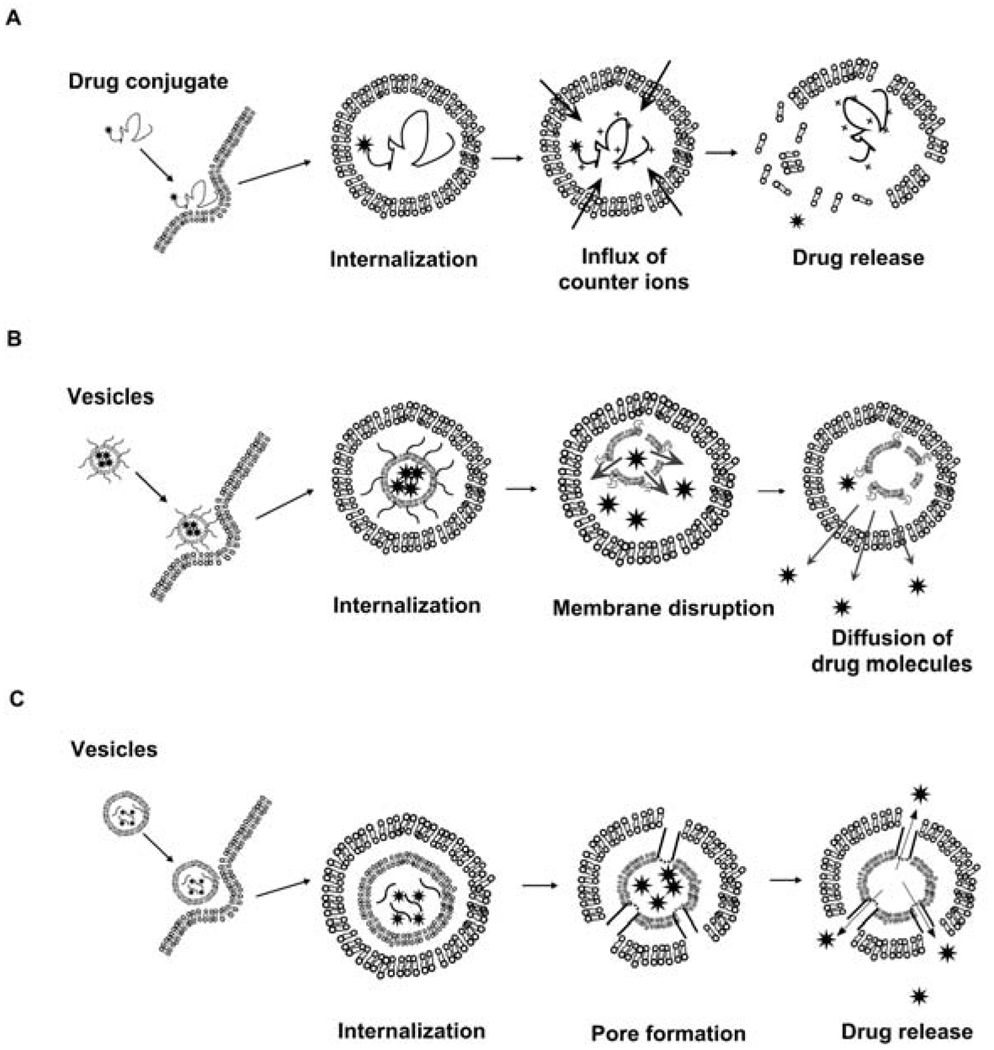Figure 5.
Strategies for pH-mediated peptide targeting. (A) Weakly basic peptides that protonate at endo-lysosomal pH may promote the lysosmotrophic release of contents into the cytoplasm [144]. (B) Lipid vesicles with surface-associated peptides may be ruptured via pH dependent change in peptide fold. Membrane disruption may release drug into endosomes, which can then traffic into the cytoplasm. (C) Lipid vesicles with encapsulated peptides may undergo a conformational change at endo-lysosomal pH, forming pores. These peptides may rupture the membranes of both the carrier and endosomes, promoting cytoplasmic drug release [145,146].

